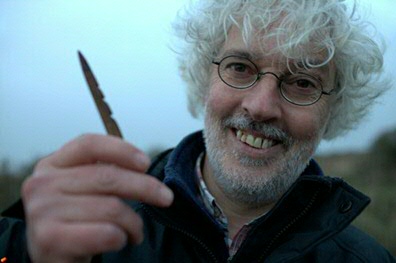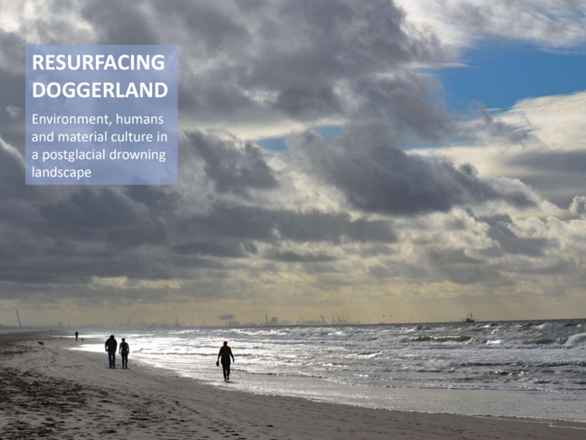Resurfacing Doggerland. Environment, humans and material culture in a postglacial drowning landscape

In het kader van het programma ‘Archeologie telt. Op weg naar toekomstbestendig archeologisch onderzoek’ heeft NWO een substantiële subsidie toegekend aan het project ‘Resurfacing Doggerland. Environment, humans and material culture in a postglacial drowning landscape ’. Doel van dit programma, waarin vier aanvragen zijn gehonoreerd, is het stimuleren van onderzoek waarbij (innovatieve) methoden en technieken worden ingezet voor vragen die in de archeologie centraal staan en dat bijdraagt aan het ontwikkelen van een kennisketenbrede duurzame onderzoeksinfrastructuur. Kennisoverdracht/valorisatie naar een breder publiek is een belangrijk onderdeel van het programma. De gehonoreerde aanvraag is ingediend door dr. Hans Peeters van het Groninger Instituut voor Archeologie van de Rijksuniversiteit Groningen.
Over het project
Met een budget van bijna 675-duizend euro zal een breed samengesteld consortium onderzoek gaan doen naar de effecten van zeespiegelstijging op jager-verzamelaars die in de periode tussen 20.000 en 6000 jaar geleden het zuidelijke Noordzeegebied bewoonden, een gebied nu vaak aangeduid als ‘Doggerland’. Duizenden archeologische en paleontologische vondsten die op Nederlandse stranden zijn opgeraapt en uit de Noordzee zijn opgevist, bevatten een schat aan informatie over dit verdwenen, ooit door mensen bewoonde landschap. Met behulp van een breed scala onderzoeksmethoden zullen gegevens worden verzameld over allerlei aspecten van de bewoners van het voormalige Doggerland. Zo informeert oud DNA uit menselijke botten ons over genetische relaties, isotopen geven aanwijzingen over hun dieet, en de enorme hoeveelheid gebruiksvoorwerpen, afval en dierlijke botten geeft inzicht in culturele ontwikkelingen en de omgeving waarin men actief was. In combinatie met een groot aantal koolstofdateringen gaan deze gegevens ons helpen om nieuwe kennis te ontwikkelen over de invloed van zeespiegelstijging en de daarmee verbonden verandering in de omgeving op het sociaal-culturele leven, een problematiek die we tegenwoordig maar al te goed kennen.
Het onderzoek is mogelijk dankzij de inzet van een groot aantal verzamelaars, die hun tijd doorbrengen op de stranden van o.a. de Maasvlakte en de Zandmotor. Het project besteedt dan ook ruim aandacht aan publieksbereik, waarbij samengewerkt wordt met het Rijksmuseum van Oudheden in Leiden waar momenteel een tentoonstelling en uitgebreid activiteitenprogramma over Doggerland wordt voorbereid. Ook de verzamelaars worden bij het project betrokken. Daarnaast zal er aandacht zijn voor de ontwikkeling van werkwijzen die toepasbaar zijn bij toekomstige ingrepen op de Noordzee, zoals grootschalige zandwinning en de bouw van windenergieparken.
Meer informatie: neem contact op met projectleider dr. Hans Peeters ( j.h.m.peeters rug.nl ).

Partners
Rijksuniversiteit Groningen, Groninger Instituut voor Archeologie (dr. Hans Peeters; Merel Spithoven MSc; dr. Paul Storm), Rijksuniversiteit Groningen, Centrum voor Isotopen Onderzoek (dr. Michael Dee), Leids Universiteit Medisch Centrum, Humane Genetica (drs. Eveline Altena), Rijksuniversiteit Leiden, Faculty of Archaeology (Prof. dr. Annelou van Gijn), Vrije Universiteit, Faculty of Science, Geology and Geochemistry (dr. Lisette Kootker), Archaeobone (dr. Jørn Zeiler), De Steekproef (drs. Marcel Niekus; dr. Dimitri de Loecker), Natuurhistorisch Museum Rotterdam (Dick Mol), ADC Archeoprojecten (drs. Axel Müller; drs. Wouter Waldus), Rijksmuseum van Oudheden (dr. Luc Amkreutz), Gemeente Rotterdam, Bureau Archeologie (drs. Dimitri Schiltmans), Rijksdienst voor het Cultureel Erfgoed (dr. Bjørn Smit), Rijkswaterstaat, Zee en Delta (drs. Ad Stolk).
Meer nieuws
-
16 december 2025
Hoe AI mensen met taalstoornissen kan helpen hun spraak te vinden
-
18 november 2025
Een wifebeater? Hoe taal schadelijke ideeën versterkt
-
03 november 2025
Menopauze in perspectief: Hoe de media onze beleving beïnvloeden
